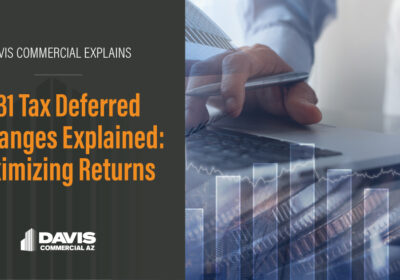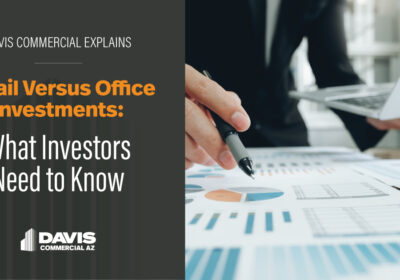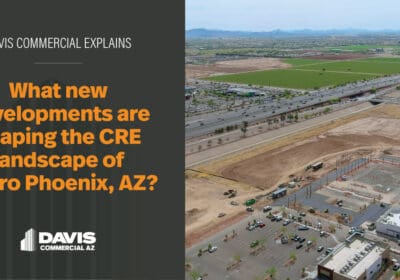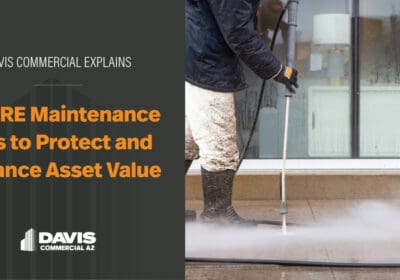Key Trends Driving the Future of CRE in Arizona

The ever-evolving commercial real estate market is influenced by economic trends, changes in political and financial policy, and shifting investor sentiments. Real estate investment decisions and economic conditions have always been closely linked with economic growth, often fueling demand for property ownership, and in turn, price escalations.
The key trends driving the future of commercial real estate (CRE) in Arizona include:
- Technological advancements
- Infrastructure investments
- Evolving tenant preferences
2025 will be a transformative year for the CRE market, and while there will always be challenges, opportunities are plentiful for those ready to adapt and innovate. Commercial real estate remains a preferred option for private and institutional investors, especially as they look for stability in times of economic unpredictability.
Let’s take a more in-depth look at these driving forces with a sector-by-sector analysis and examine how they will impact the future of CRE in Arizona:
Industrial sector
During the past two years, Phoenix-metro tenants have absorbed more than 15 million square feet of industrial space. Arizona continues to see high demand for industrial space, specifically for space under 100,000 square feet. One of the factors stoking the flame is the state’s strategic location. With access to major transportation routes and business-friendly policies, demand for warehouses and distribution spaces has skyrocketed. Arizona’s geographic positioning, coupled with staggering corporate investment has put the industrial sector in the spotlight. More specifically, the investment in Taiwan Semiconductor (TSMC) is stimulating massive expansion in the Phoenix-metro area with a proposed “city within a city,” that developers have named Halo Vista. The $65 billion investment aims to integrate manufacturing, residential, retail, hospitality, research facilities, and even an auto mall, with the potential of generating upwards of 90,000 jobs.
Office market
The office space sector is experiencing a revolution shaped by hybrid work models and the changing preferences of its tenants. Despite high vacancy rates, there’s a growing demand for Class A office spaces that provide modern amenities and flexible floor plans. Developers are focusing on opportunities that permit the repurposing of older buildings for other uses and reflect a strategic shift in property utilization.
Retail sector
While there are nationwide challenges for the retail sector, Arizona’s retail space demonstrates resilience. A growing population, boasting 400 in-migrants per day, and a boom in tourism contribute to vacancy rates remaining low and increasing rents. Developers are excited about mixed-use projects, combining retail with residential and entertainment spaces, satisfying modern consumer and tenant preferences.
Multifamily sector
In 2024, the Phoenix metro area saw the delivery of 70,000 new units, more than double the average annual rate. The driving forces behind the surge in development include job growth, immigration, and favorable rent-to-buy ratios. Although the expected number of units in 2025 and the rate of absorption may create a temporary oversupply, the market is expected to stabilize in the coming years.
MOB/Healthcare real estate sector
Arizona has always appealed to people seeking a place to retire. While there is an increase in young people moving to the state, the overall population is aging faster than the national population. As a result, we see a rise in senior living communities being developed and an increase in demand for medical office buildings (MOBs) and surgery centers. These trends continue to support resilience in the healthcare real estate sector. Proximity to more densely populated areas and hospital systems is prime for healthcare real estate investments, with the state’s top 10 hospitals located in the Phoenix metro area.
Why sustainability and technology integration matter
Sustainability and technological advances are becoming central to Arizona’s CRE environment. Developers are adopting green building practices and incorporating smart technologies to improve operational efficiency and tenant experience. This shift amplifies broader environmental, social, and governance (ESG) considerations, affecting investment and development strategies across the state.
With more than 25 years of experience in Phoenix commercial real estate, Davis Commercial can successfully guide investors in the buying, leasing, and selling of commercial real estate properties in Arizona. Partnering with a broker ensures a thorough analysis of current market trends and development of a strategy that aligns with the clients’ objectives. To learn more about Davis Commercial and its services, get in contact here.
Related Posts

1031 Tax Deferred Exchanges Explained: Maximizing Returns
As businesses grow and operations evolve, so do their property needs. The need for new…

Retail Versus Office Investments: What Investors Need to Know
Not all commercial real estate properties are created equal. Whether you’re eyeing a retail center…

What new developments are shaping the CRE landscape of Metro Phoenix, AZ?
Metro Phoenix consists of more than 20 municipalities and continues to rank among the fastest-growing…

10 CRE Maintenance Tips to Protect and Enhance Asset Value
Protecting the value of a property in commercial real estate (CRE) is crucial, especially for…
